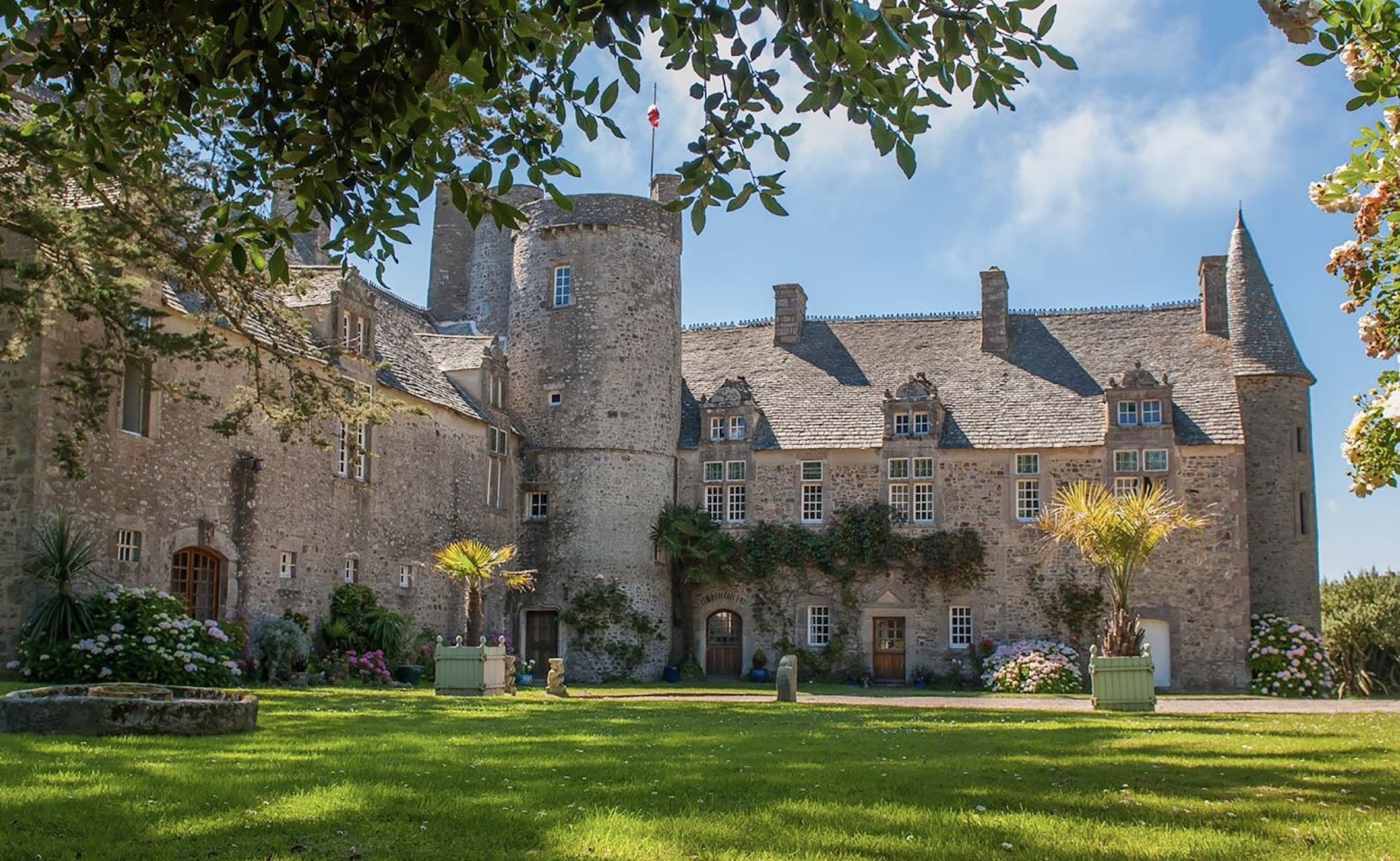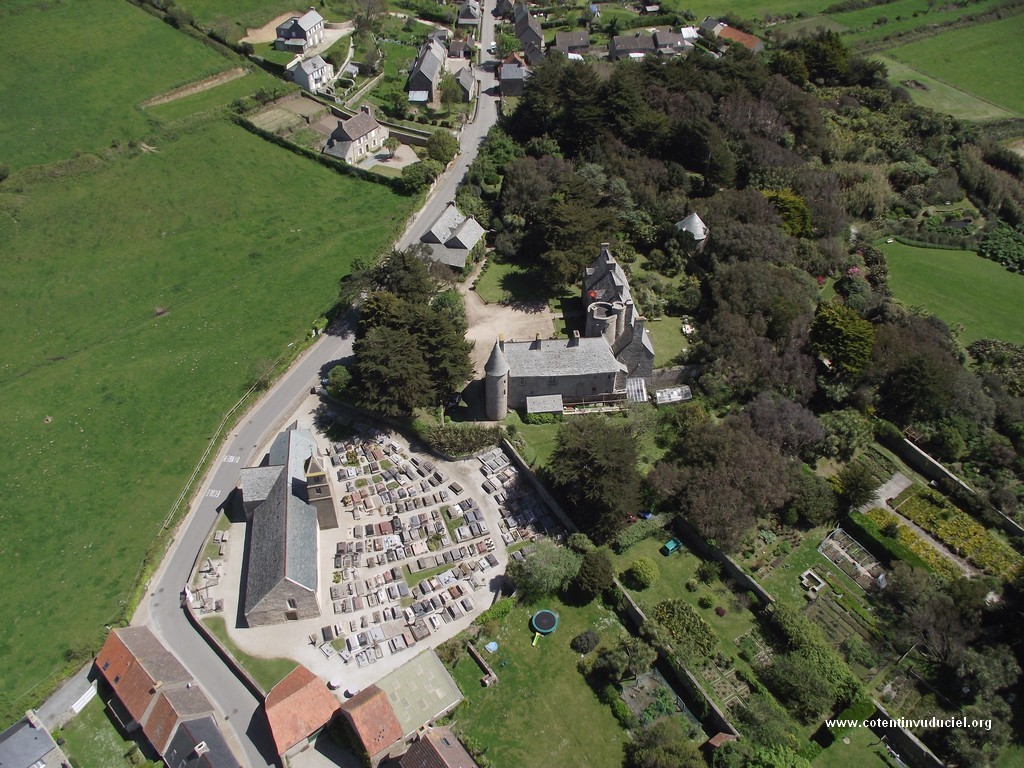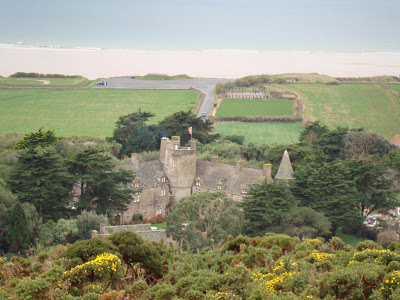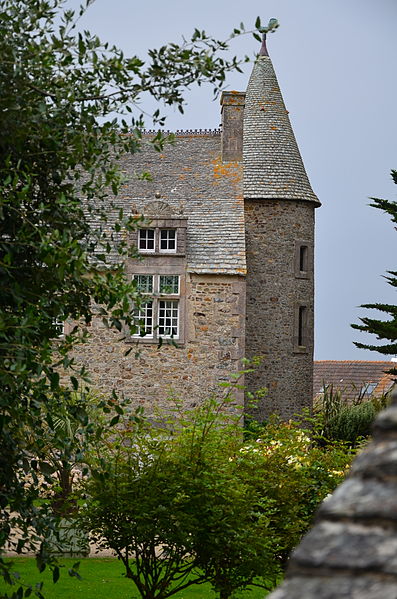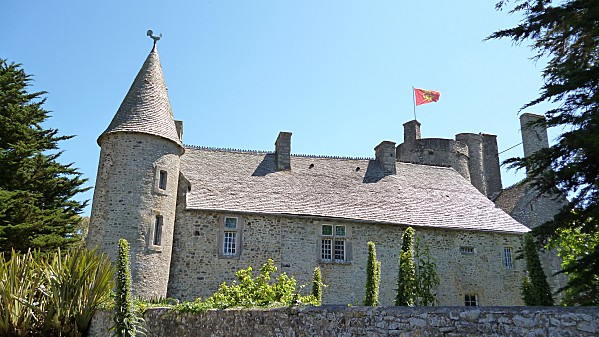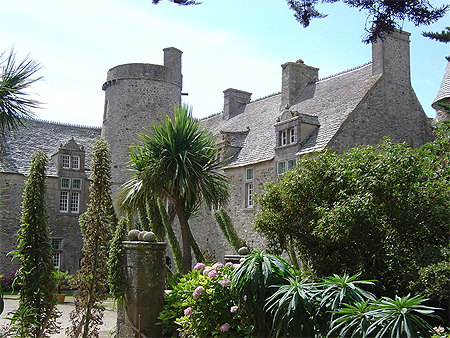The castle
Le château, le Jardin botanique et l’église de Vauville
Documents concerning the château's past were lost during the bombing of Saint-Lô and the Departmental Archives during World War II. We shall only highlight several aspects of the history and architecture of the buildings which appear on the National Historical Monuments supplementary list. In 1163 Richard de Vauville undertook the construction of a fortified castle. Only the donjon is still standing today. He was also responsible for building the Saint Hermel Priory situated on a hill overlooking Vauville to the northeast. The priory was under the authority of the Abbey Cerisy-la-Forêt.
Near the château, the Vauville church which dates from the same period was once part of the domain. The Vauville lords went to England to fight during the Hundred Years' War. Then, one branch of the family settled itself in England. One of its members, Lord Wawell, was viceroy of lndia. Dating from the second half of the 17th Centuries, the ailes as you can see them today are joined in a right angle by the main tower. The walls of solid construction in local stone are nearly a metre thick. With its mullioned windows, vast tireplaces and shale roofs, the Château de Vauville is one of the tinest examples of fortified architecture in the Nord-Cotentin.
The gable windows surmounted by a star and rising sun motifs indicate that the domain was part of the royal Fief. They were also a sign of exemption from the gabelle, the sait tax. Few vestiges of the fortifications remain, only the tower, the circular exterior wall and the moat surrounding the castle. Built in 1732 outside the circular wall, the dovecote is characteristic of outbuildings. lnside there are pigeon hales for one thousand birds. Among the former owners of Vauville were Admiral de Tourville's brother ( 1642-1701) as well as Napoleon's aide de camp, General Le Marois. In 1837, Polydor Le Marois tore down the gatehouse where the Blessed Thomas Elye, Saint Louis' almoner, died - he is buried in the nearby church of Biville. At the same period the buildings which gave a medieval aspect to the chateau were also destroyed. ln its present configuration the chateau has been maintained and restored by the same family for over than a century. During World War II the buildings were pillaged and widely damaged.
